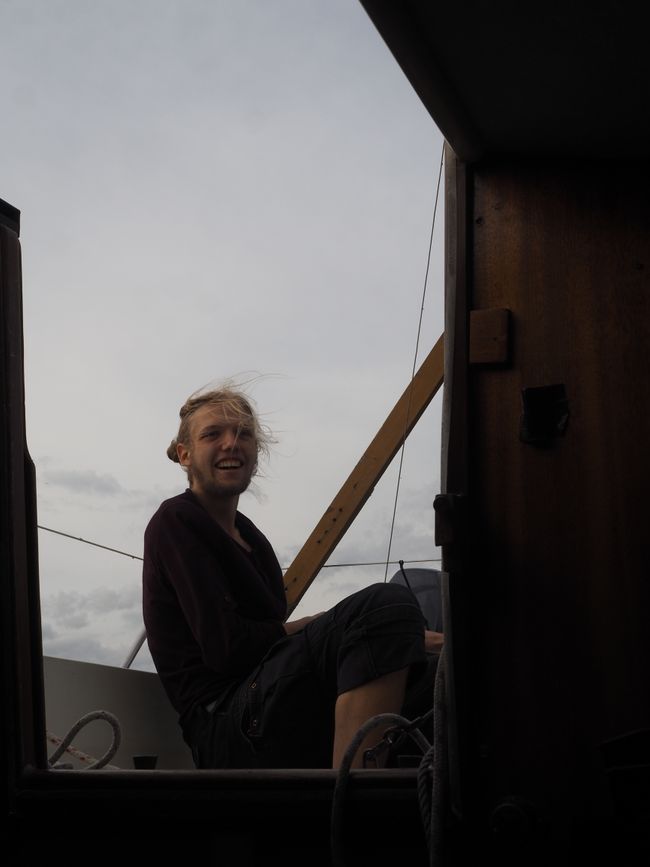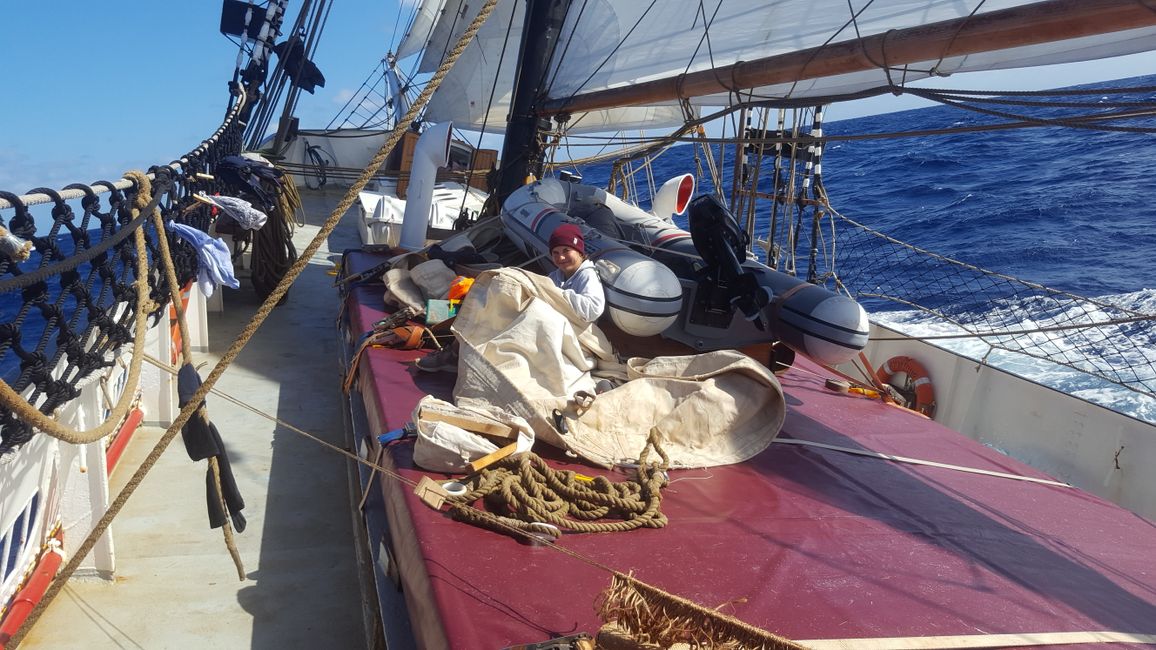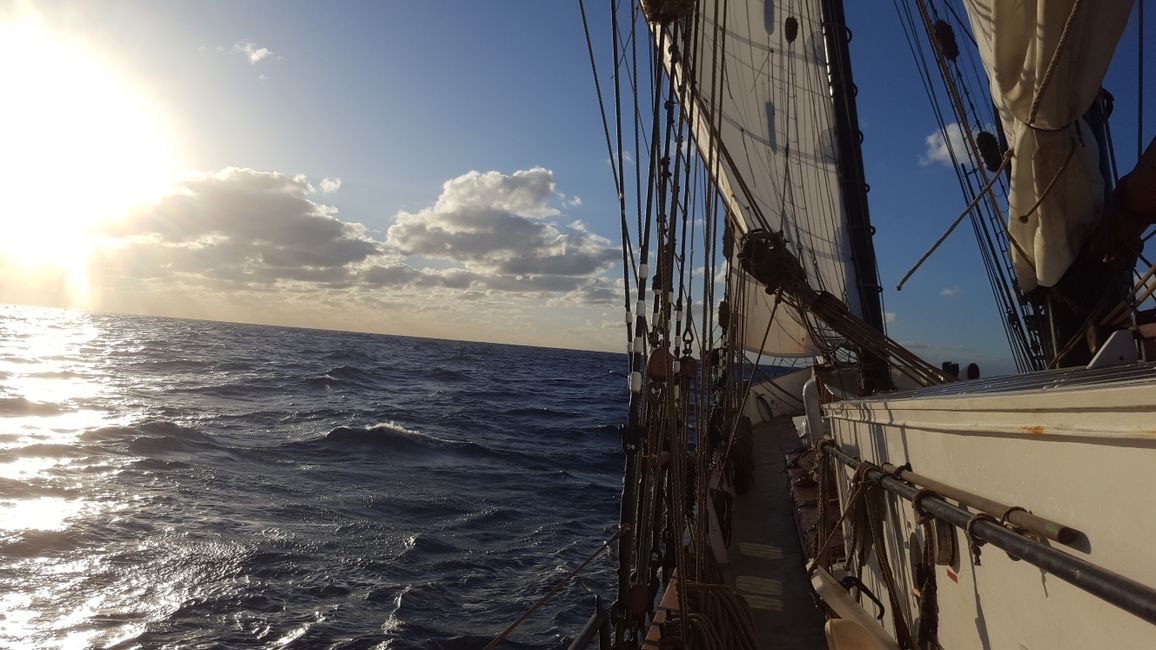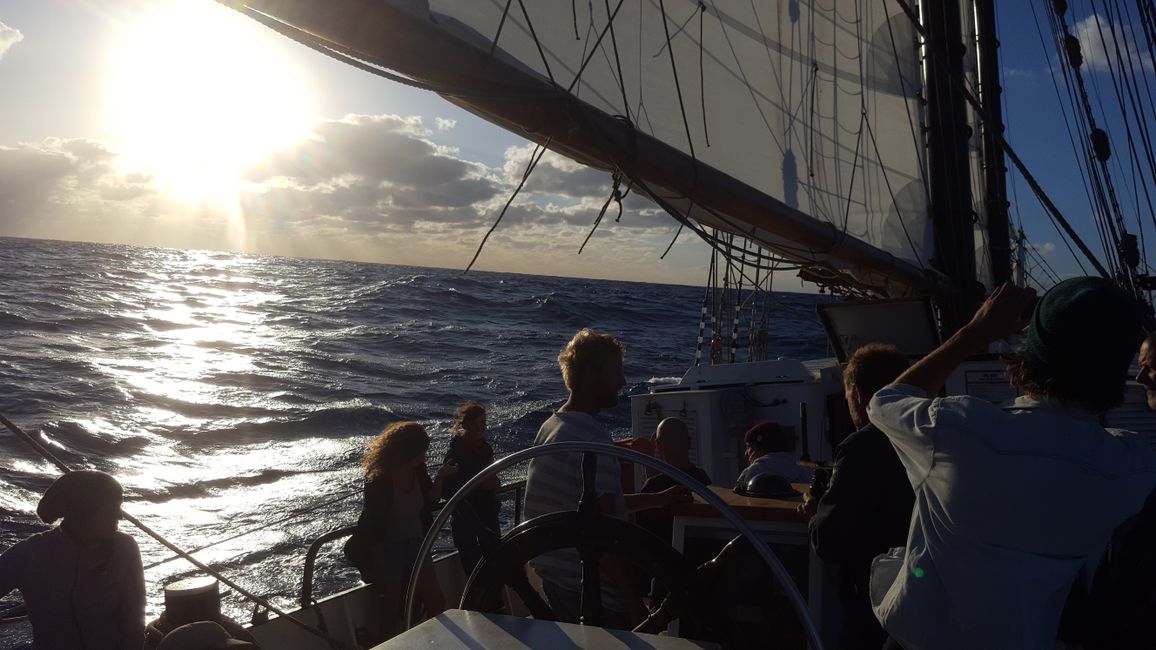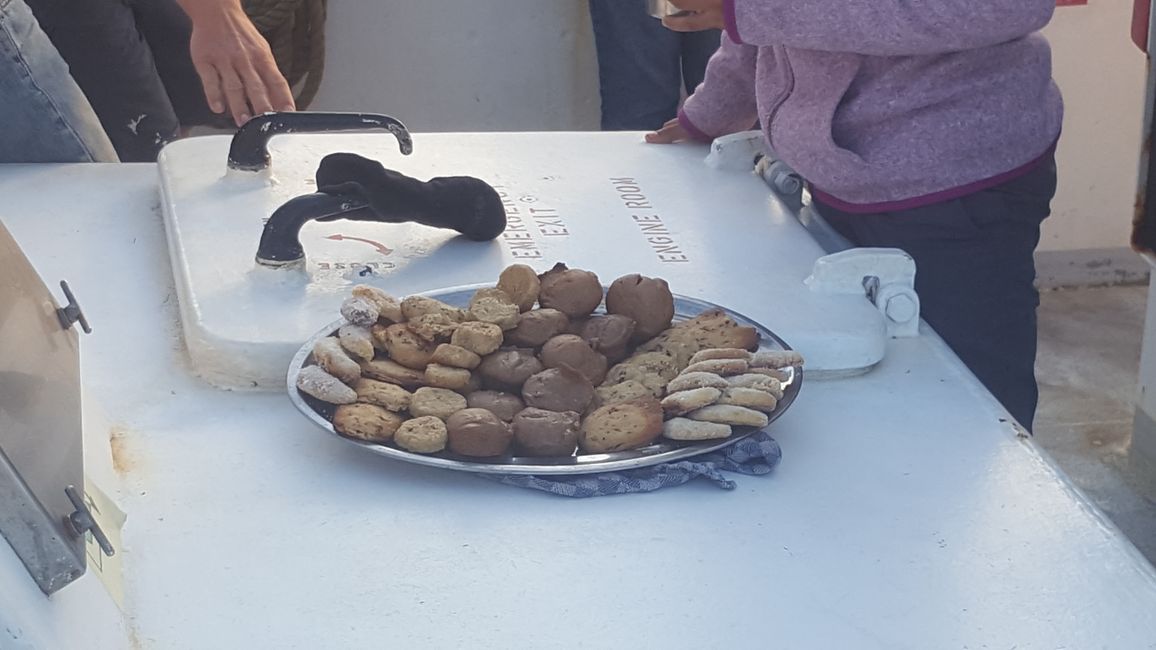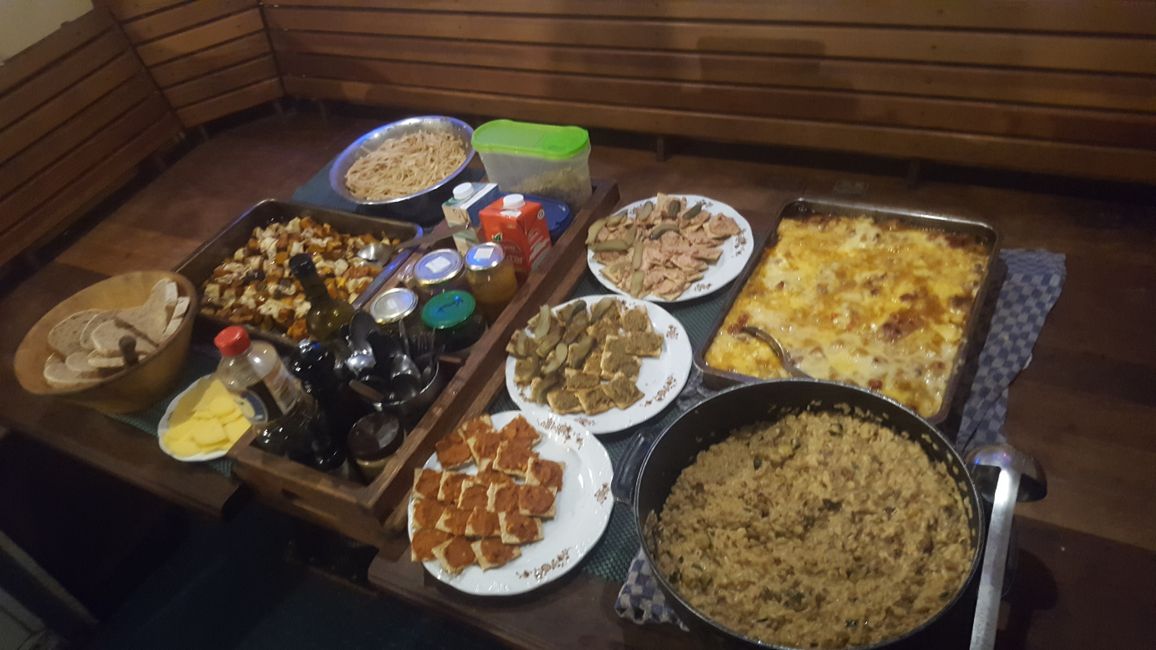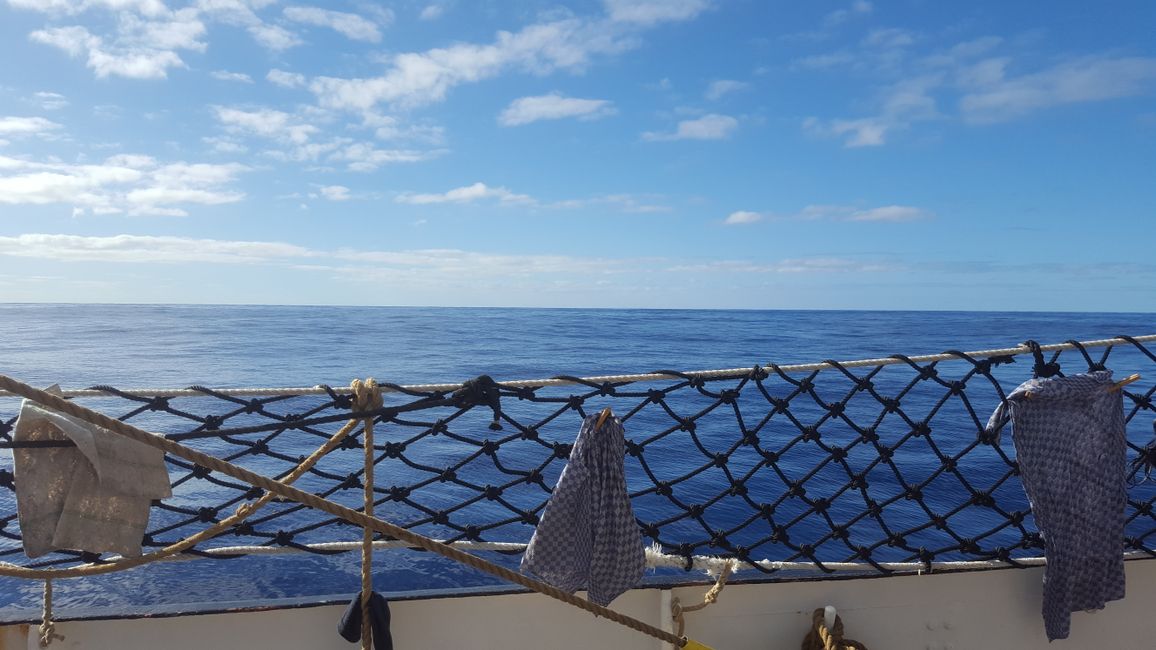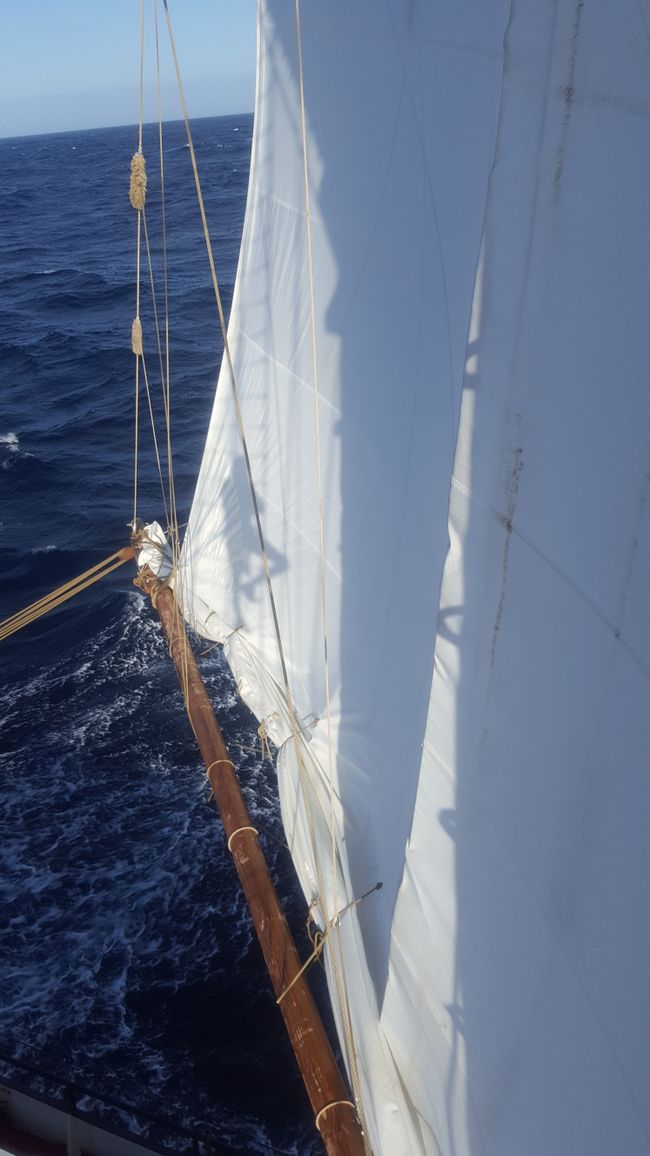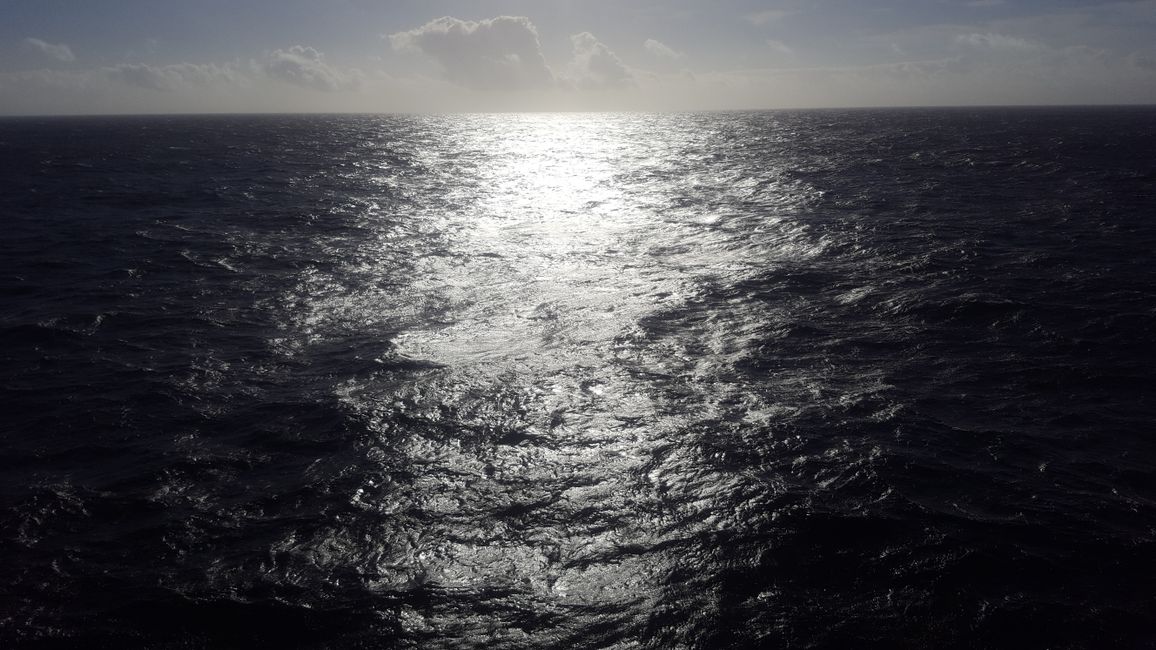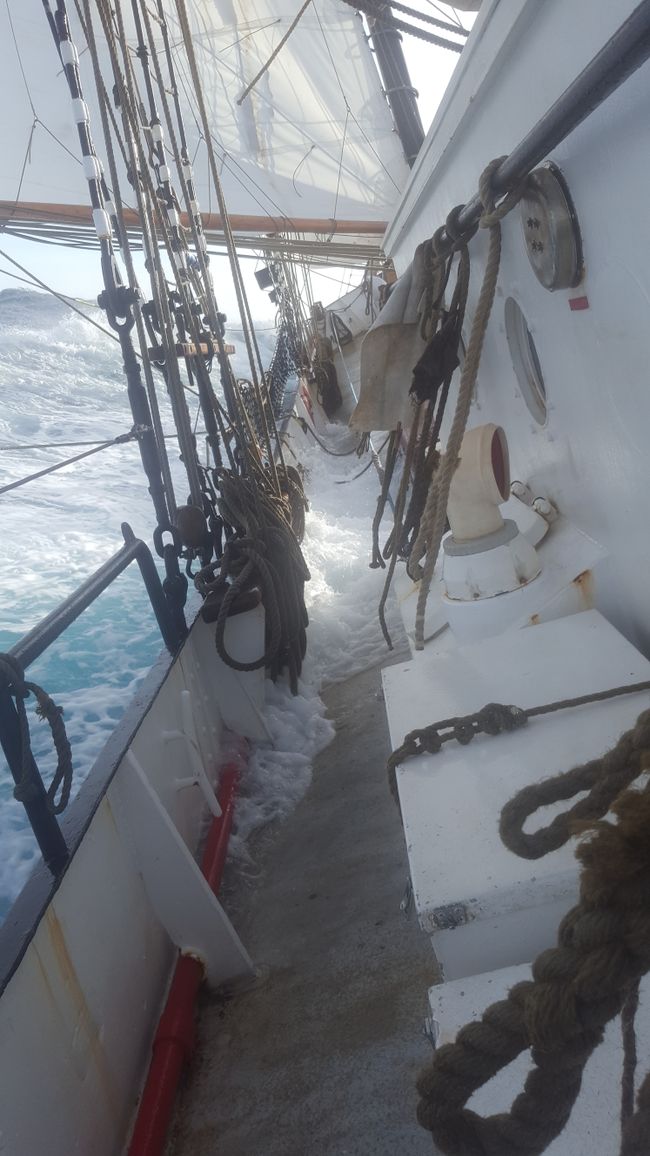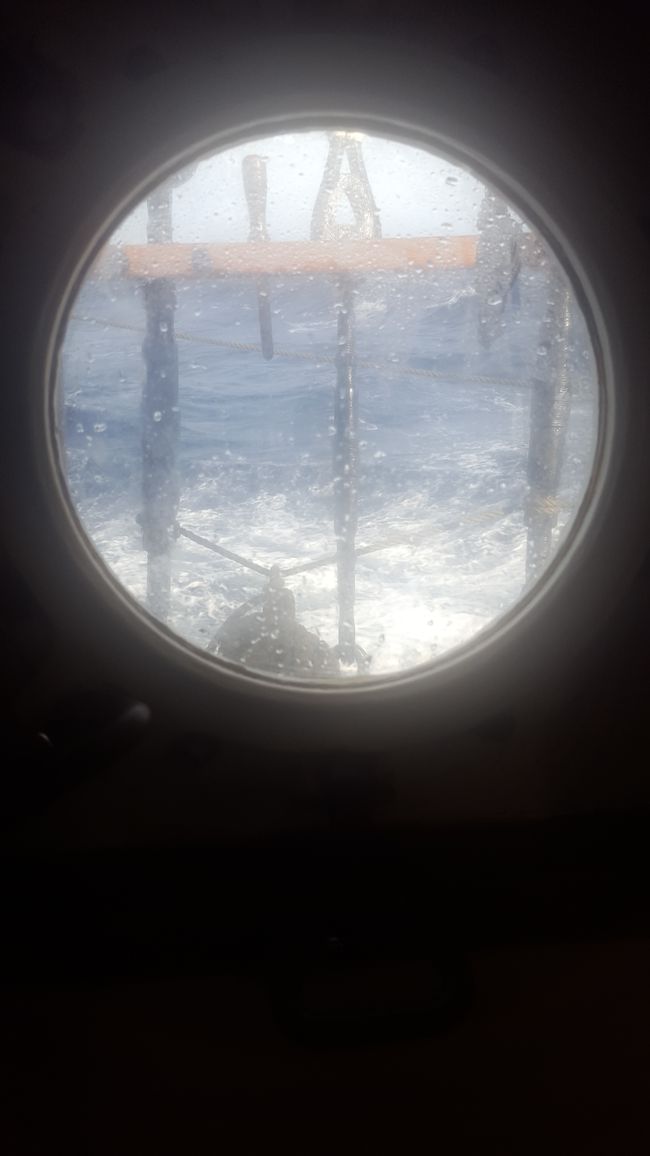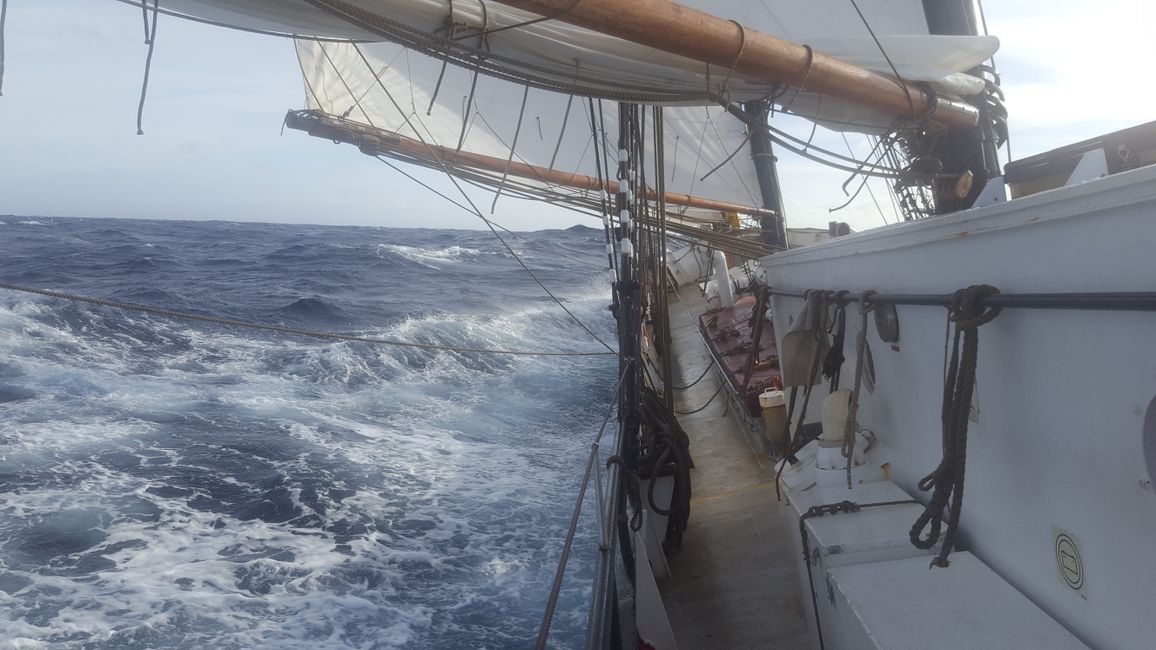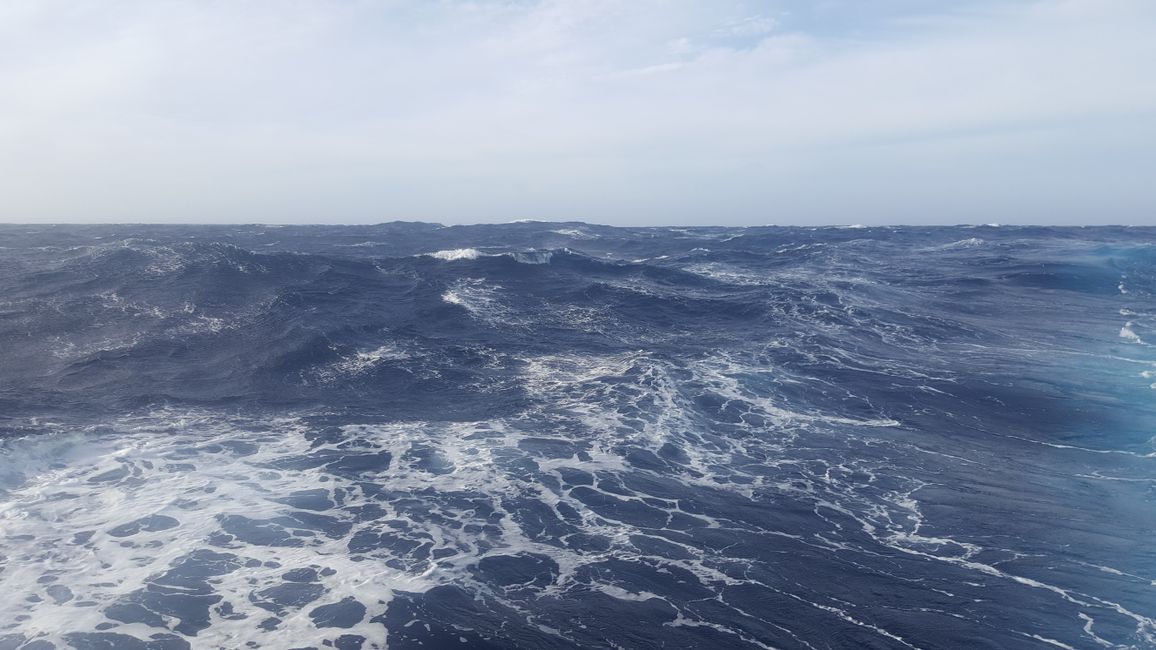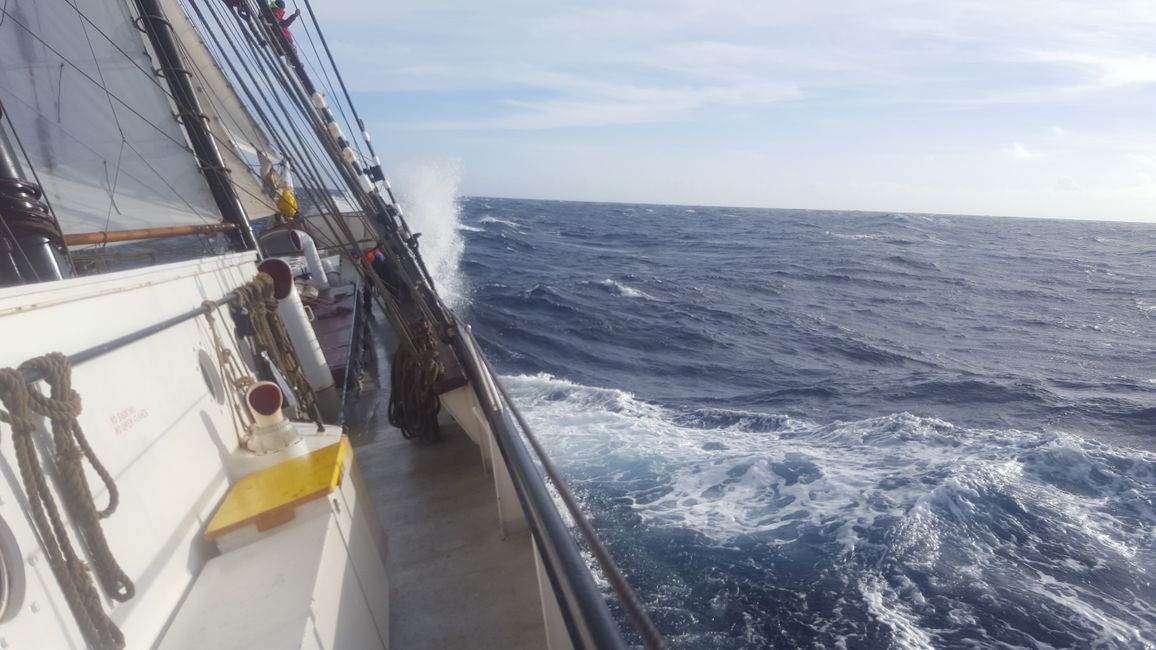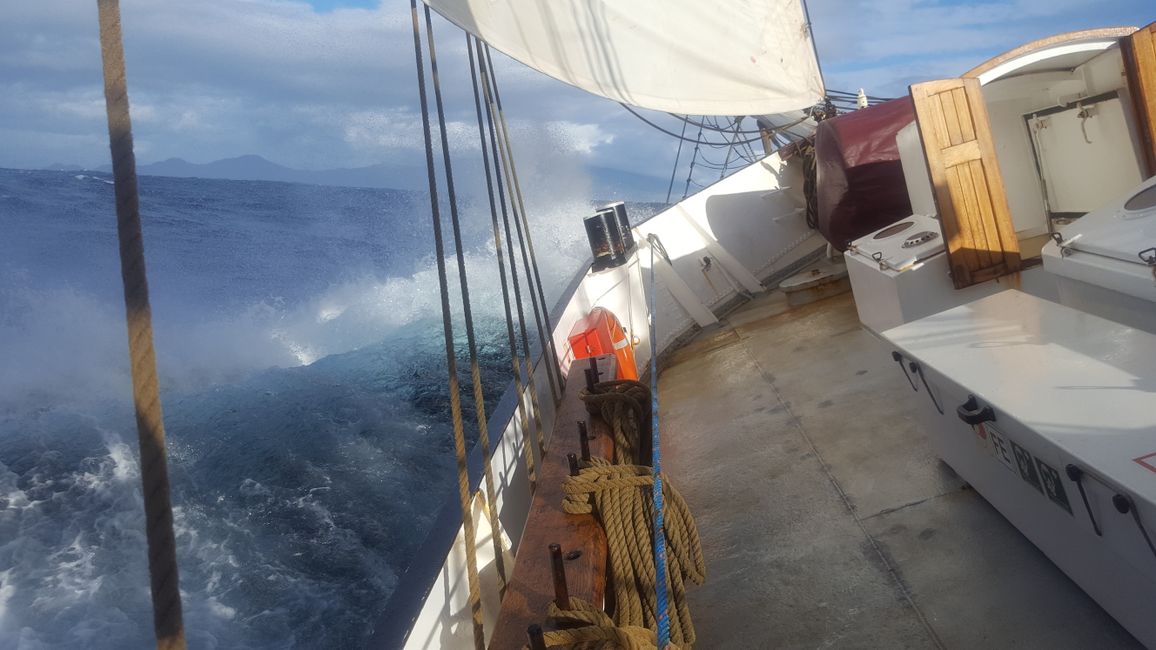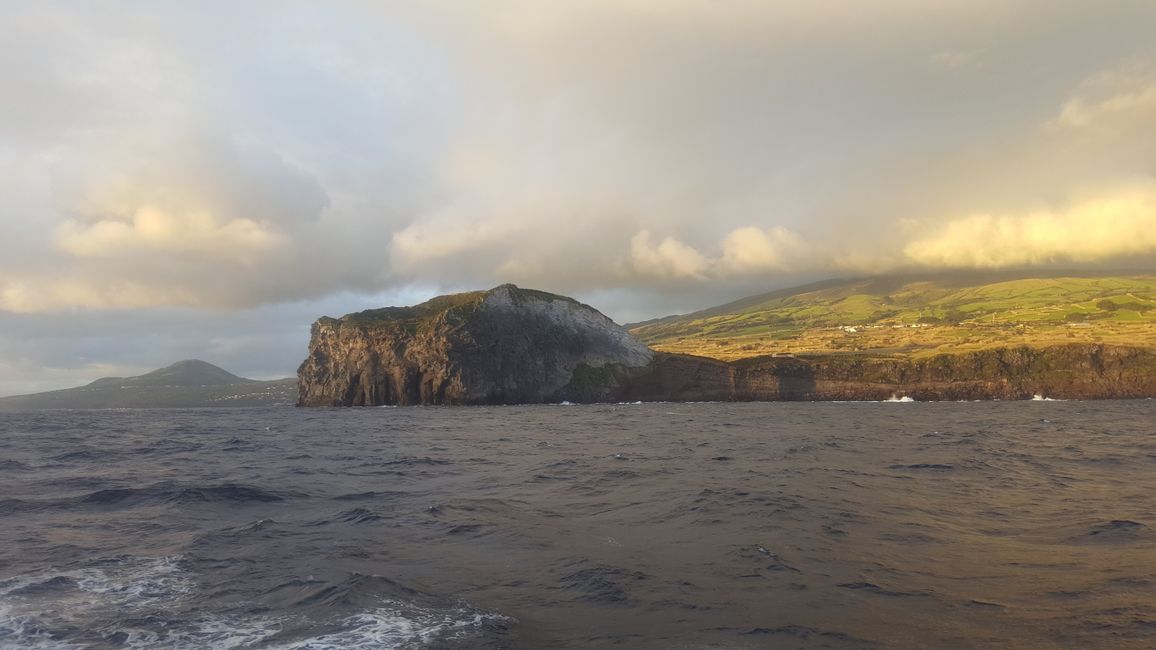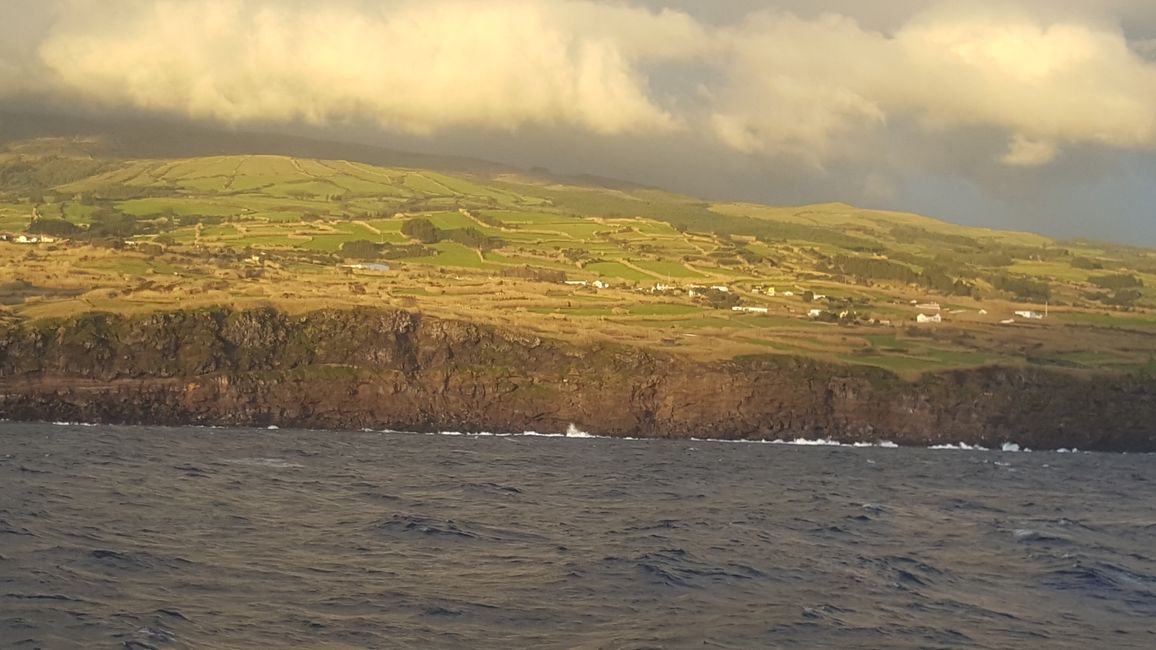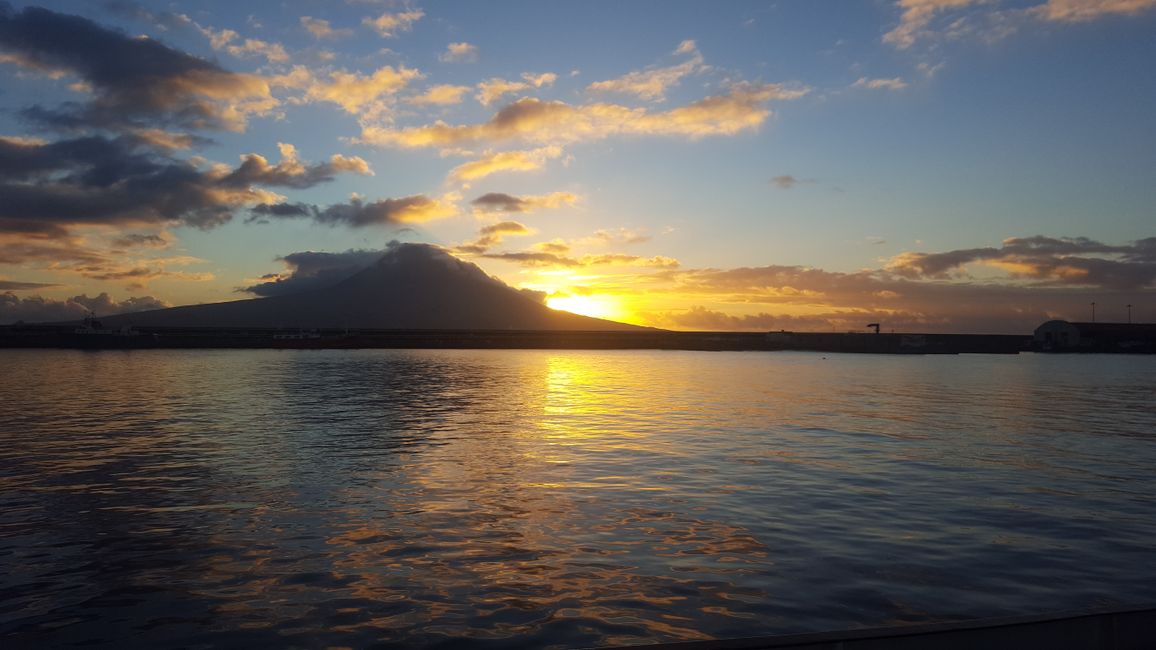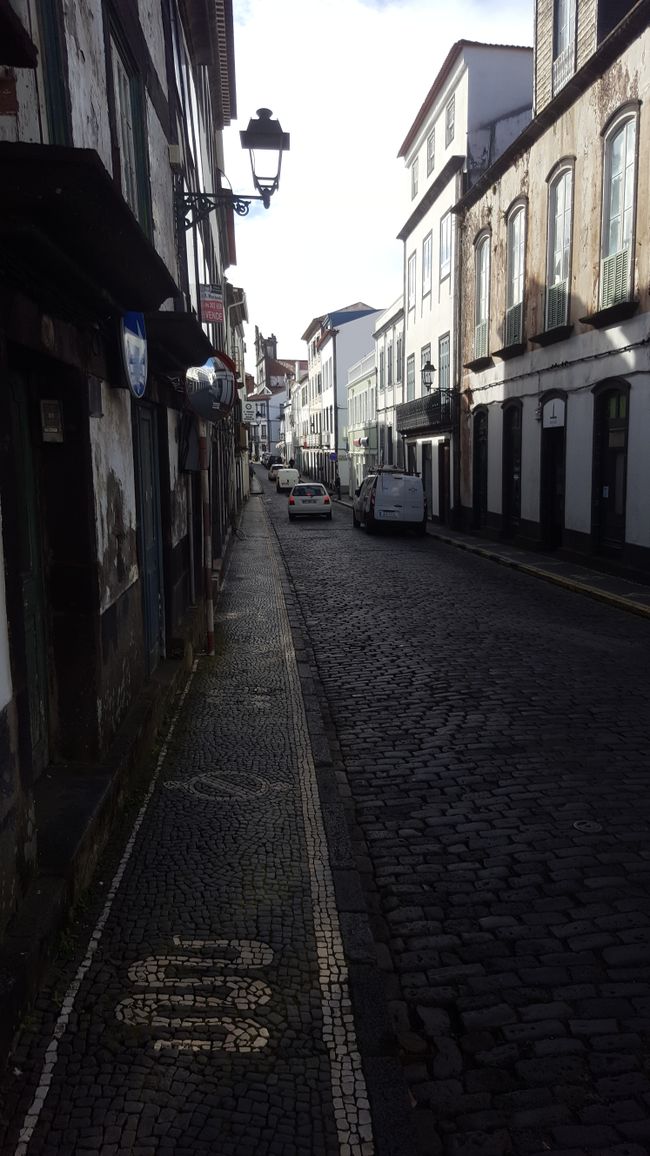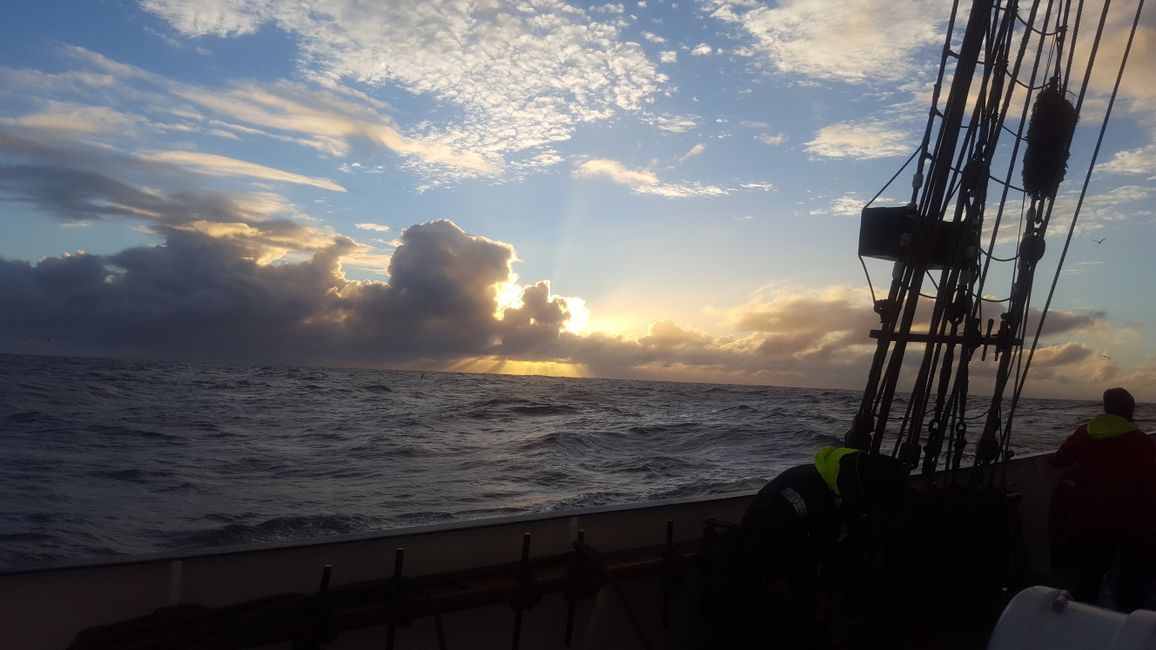Wear and tear and shortcrust pastry
Weşandin: 13.01.2022
Subscribe to Newsletter
Uh yeah hello, we've been on the water for 32 days in a row now. That's a long time.
From touchdowns, ripping sails, to big waves and holidays, we had it all.
When was the last entry? Oh wow, St. Martin, that feels like ages ago.
Disclaimer: long text.
In St. Martin, Cornelius said goodbye to us. The first mate, Felix, became captain. The atmosphere on board immediately became more relaxed.
Sailing from St. Martin to Colombia was a very pleasant experience. We had consistently high speeds of 8 knots. How fast that actually is, and what our travel speeds are, I'll talk about that later.
If I remember correctly, we arrived in Colombia within 5 days. Straight across the Caribbean Sea.
Oh yeah, arriving in Colombia. We were supposed to anchor in the bay near the city. But the bottom in front of Santa Marta is very sloping.
A brief explanation of the anchor winch.
The anchor weighs 300 kilos and the winch is operated by hand.
Every 28 meters, there is a colored shackle in the anchor chain, so the length can be estimated in the water.
On the first day and the following night, we lifted the anchor and reset it about four times. The most exhausting part was having four shackles in the water. You can do the math yourself. Well, our record is 25-30 minutes for four shackles, I believe. It's all very exhausting.
The sloping bottom was not the only problem, there were also extremely strong winds coming from the Andes at night.
In the end, this meant that there always had to be at least five people on board to keep an eye on the anchor.
Fun fact, it's not the anchor that holds the ship, it's the chain. The anchor just holds the chain in place.
So we arrived, but we didn't go ashore right away. The entry process and all that was not clear. Corona stuff.
Well, on the second day in Santa Marta, we started loading. We went to the industrial port where the 300-meter cargo ships are docked and waited for the coffee. After a lot of back and forth, we finally started loading.
To our cargo hold. The Avontuur is over a hundred years old. Back then, there were no containers.
So we brought the 70-kilo bags that were stored in a container down a slide into the cargo hold and then distributed them. By hand.
It took us 3.5 hours to load 33 tons.
It was very strange because next to us there was a cargo crane that lifts the whole container and loads it in 10 seconds.
We managed the 3.5 hours quite well, but it wasn't very ergonomic.
What I didn't expect at all was that the coffee producers would come by. It turns out that the coffee transported by the Avontuur is produced by an indigenous community from Colombia. I never thought I would be part of something like this.
Very cool indeed.
There was also some cocoa involved.
So the plan was to leave after loading. But there was a problem. Our second mate, my officer, had his appendix removed.
While we were sailing to Santa Marta, he started having back pain. When we arrived in Santa Marta, the pain localized to the area of the appendix. The captain sent him to the hospital.
Well, fortunately that happened there. It's an unpleasant thought if something like that happens in the middle of the ocean. So Felix had four semesters of medicine in his nautical studies and spent two months, as required, in the emergency department. But removing an appendix? If it becomes necessary, there is the Maritime Hospital in Bremerhaven. They have a 24/7 hotline, you call them and they guide you through the process of cutting!
Oh, the life at sea.
Back to Pol, my officer. Of course, Pol stayed in Santa Marta. However, four people on board must be qualified. That means at least able seaman. That means at least 6 months of sailing time on cargo ships and a Basic Safety course. That's a course on ship safety. Well, since Pol was in the hospital, there were only three qualified people on board. So we weren't allowed to leave.
It could be called short-term, within 48 hours Dan arrived. My new officer.
These sailors seem to be very flexible. Yeah, just be in Colombia, now. Dan lives in Sweden.
Because of this, we stayed in Santa Marta for a week.
Crazy city, lots of street food, but the best part was all the juice stands. Man, forget about freshly squeezed orange juice. The taste buds exploded!
It was all very delicious and very touristy.
There wasn't much time to explore everything more intensively.
And then the big leg was coming up. From Santa Marta to Horta in the Azores. 3600 nautical miles.
From Santa Marta, we first sailed north through the Caribbean. This time we sailed as close to the wind as possible. That means the wind is coming from 60° in front of us. That also means that the waves are coming from the front. It was quite wet from Colombia to the "Windward Passage," which lies between Cuba and Haiti. But it wasn't so bad because we still had 30 degrees Celsius.
After setting sail, hoisting all the sails, and the adrenaline disappeared, I was seasick for about three days.
I'm okay with being seasick, but it's such an annoying state.
Then we had to navigate through the island belt in the northern Caribbean, and then we were back in the Atlantic after about a week or so.
After a week, I don't know how, someone noticed that one of our foresails, the chaser, was pretty damaged. We spent a total of two weeks sewing on this sail, in every watch, not a single day off.
When sailing to the Caribbean, the wind is very stable. It's a bit different when heading towards Europe. It's more about constantly looking for where low-pressure areas are and where the best wind is. But that also means making sure there isn't too much wind.
The crossing of the Atlantic can be summed up like this: 4 to 5 days of strong winds where we sail at about 8 knots, and then 2 to 3 days of calm or no wind at all. At least until the beginning of January.
It should also be mentioned that we always had calm seas for every holiday or birthday.
Yeah, the holidays were approaching quickly. And of course, we baked cookies. Even gingerbread cookies. On the night before Christmas, we wanted to bake the cookies. Chris also baked bread that night, and everything was supposed to be done in one go. We want to save propane gas and all. Well, on the evening when we made the cookies, the sea state was quite rough.
It was very exhausting, you're flying through the galley, trying to shape crescent rolls while the chocolate cookies slide off the baking sheet because haha, the oven is tilted, and we ran out of parchment paper.
We also decided to make gingerbread muffins instead. Chris is on the watch after me, from 4-8 a.m. In the end, I stayed awake from midnight to 7 a.m. It took so long for everything.
And it was worth all the effort, Christmas was super nice. At 4 p.m., there was an all-hands meeting. Dan had brought glögg! No way. On Christmas, we had cookies and mulled wine, in the middle of the Atlantic. Best combination, I can only recommend it.
And the dinner table was beautifully set, Vincente put a lot of effort into it. Of course, we helped him a lot.
But the best gift was on the 25th. It was calm, and after much consideration, Felix said, 'okay, you can go swimming.'
Noice, I was really hoping for that. Swimming in the middle of the ocean, in the Bermuda Triangle! 5000 meters of nothing below you.
When I looked into the depth, it was like a blue wall that goes on forever. Impressive sight.
In the middle of nowhere. Far away from any land. And the water was so calm, completely different from the bays.
So swimming is a great way to explain the speed.
First, a knot is equivalent to about 1.8 km/h or 1 nautical mile per hour.
Another fun fact. A nautical mile is technically not a length but an angle. 60 nautical miles are 1° on the globe.
To make it a bit more illustrative, I like to convert it into meters per second.
Super easy: 2 knots are about 3.6 km/h = 1 m/s
So the captain said that if we have a speed of 0.0 to 0.3, we can go swimming. I think he let us in at 0.4 or 0.5.
When the ship accelerated to 0.7 knots, Felix said, 'okay, please come back in.'
If I swam briskly, not at full speed, I was as fast as the ship. So 0.35 m/s, but to get back on board, I had to accelerate briefly.
Our average speed is around 5 knots, I think, 8 knots are really fast. Our top record is 10.5, and the ship's record is 12.
So now, this is a cargo sailing ship, not a racer.
The world record was something over 50 knots, which is 90 km/h.
Another interesting record is from a regatta in the Pacific. The crew sailed with an average speed of 40 knots for 24 hours. They covered about 1000 nautical miles in a day. Our record is 180 miles in a day or so.
A creepy thing that connects to this is when it's cloudy in the evening and there are no stars or moon visible, it's really dark. We don't have any lights on deck, so you see even less.
When we are sailing at 8 knots, which also means rougher seas, no one will find you if you fall overboard. Of course, it's not impossible, but after 10 seconds, you're 40 meters away. After a minute, it's already 240 meters away.
Such a "man overboard" maneuver takes time.
That's why we always wear our life vests, with which we can clip ourselves in. ;)
It's good to keep this in mind from time to time. But it's also scary.
Holidays. On the 26th, I made pancakes with caramelized apples for everyone for breakfast. Simple dish, everything was available, and everyone loves it. That also meant being woken up at 6:39 a.m. and preparing pancakes because breakfast is at 7:15. Oh, I only had 2 hours of sleep. During the three Christmas holidays, I hardly slept at all. It was okay during that time, and it was great to be part of the celebration, but I didn't fully recover. I kind of depleted my energy reserves a bit.
Oh yeah, New Year's Eve. That will be remembered. Just like on the holidays before, a big dinner for everyone. Sam baked brownies, and everyone was awakened at 11:30 p.m. At midnight, everyone hugged and wished each other a happy new year, accompanied by a clear starry sky, calm seas, some champagne, brownies, and not a single firework. It was very simple but satisfying.
After the midnight tack, there was more champagne.
New Year's Day looked a bit different, we had the roughest seas up until then. It really set the tone for January. Everyone was awakened, we were supposed to reef all the sails and make a tack. All this on a roller coaster ride with waves of about 4 to 5 meters. Hehe, these massive waves are impressive. With this sea state, there are touchdowns, that's what we shout when the boom crashes into the water.
There are waves breaking into the ship all the time and spray from waves breaking against the hull.
Oh, what does "reefing" actually mean? It describes a maneuver in which the sail area is reduced. This is especially done in stronger winds. By reducing the sail pressure, the angle of heel is reduced, and the pressure on the rudder is reduced. Easier steering.
Equally impressive was the low-pressure system that hit us a few days before Horta. The captain had reefed as a precaution. It was intense how this huge cloud front was coming towards us. Right after the watch handover, it started. At first, we were getting slower and slower. The wind kept decreasing more and more. And then, the wind suddenly turned, blew at full force, and it was icy cold. Northerly wind. Then it was off to the bowsprit, rain pouring from above and the wave splashing from below. It gets wet. But it was also very impressive. This force of nature, and you're sitting in such a small steel boat.
From January onwards, things became gradually more challenging. The first few days were still manageable, but the longer the arrival was delayed, the more exhausted everyone became. That also applies to the ship, or especially the sails, all sails except two have suffered some damage. One sail is completely ruined. All foresails have been patched up at some point, and the schooner came loose from the boom at one point. The sea is rougher, it's colder, there's more spray, the wind picks up, and the ship rolls more. Why are we here again? Oh yeah. Fun and games.
In this weather, the idea of staying dry is a bit outdated. On the leeward side, the ship sits deeper in the water due to the pressure of the sails. On that side, the water sometimes stands a meter high, and try pulling on a line when the ship is rolling like that. It's not easy to find a stable footing.
In such weather, you're just wet, everything is wet, forget about the foul weather gear, it's just for keeping warm now.
But if these conditions lasted for a whole week, how do you dry your clothes?
Yeah, good question.
I talked to the more experienced sailors here. It stays wet. It won't dry.
When you're woken up, you put on the wet stuff, and when it's time to sleep, you put on the dry stuff. That's how it was.
The big problem is not necessarily the weather, it rarely rains for a whole week and there are always some dry hours. The problem is the salt in the fibers, it attracts all the moisture. It's not pleasant, that's for sure. It's also really demotivating to put on wet pants. After a week, I wasn't really up for it anymore.
Arrival assessment: rubber boots have a hole, waterproof gear isn't waterproof, many clothes are wet, one pair of pants is ruined, sneakers are unusable, and a severe lack of sleep.
Many things about sailing have changed a lot, but some things are still quite similar. It's still wet.
We were in the middle of the Atlantic. Far away from any land, an email came in. Someone on board had a relative who passed away. It's really sad. This whole situation can't be compared to the past, back then, the person would only have found out when they arrived home.. today, the message comes on the same day. But we're still out here, and we can't get away any faster.
A loved one has died, and you can't go, you really can't go. You might even miss the funeral.
Sometimes, the inherent concepts and circumstances of sailing are quite intense.
Another concept, watch schedule. After about six weeks in the dog watch, I can say that it's not my preferred time.
Often, I felt like I was not participating much during the day.
It starts with not having breakfast. I sleep at 4 a.m. No one gets up for breakfast at 8 a.m.
So the day starts with lunch.
Well, if I manage to get out of bed around 10, there will be lunch in an hour and a half. Not much time. End of watch is at 4 p.m., and it gets dark two hours later. Of course, it was always possible to sit in the galley and play cards, chat, or write in my diary, but especially when it's getting colder, I went to bed early. It's getting more and more exhausting after all. In the dog watch, I felt very much determined by the work rhythm.
Wow, yeah, we've been at sea for a while. Around 3900 nautical miles or so. I'm doing great so far. I'm really looking forward to the watch change and the shower. It was getting critical.
Let's see how long we'll stay in Horta. Then it's on to the final leg, then this trip will be over.
Last stop, Bordeaux.
Subscribe to Newsletter
Bersiv (3)
Willi
Coole Story! 👍Asta
Asta
It must be incredibly exiting,so much impressions, very hard work, but a nice place to be any times. What an experience for you. :-)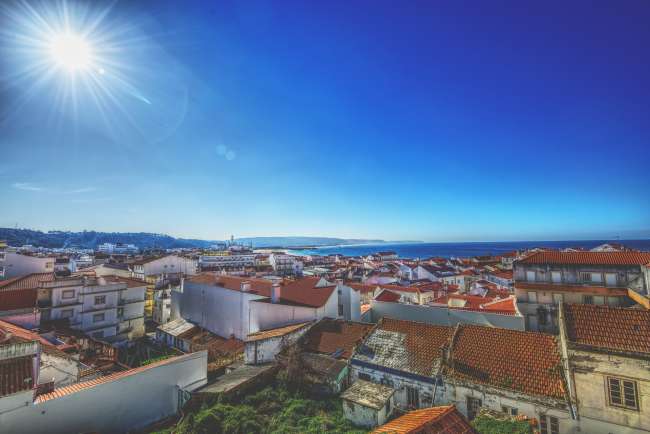
Raporên rêwîtiyê Portekîz

